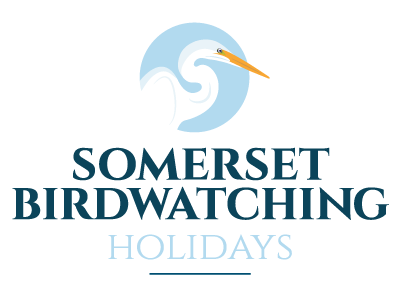A splash of yellow brightens another Groundhog Day
What with lockdown due to COVID-19 my birdwatching options have been somewhat restricted, mostly limited to the garden, walks around the lanes close to Walls Farm. However, on Saturday morning I hopped on to my bike and cycled the short distance to Tealham Moor on the very edge of the Somerset Levels, all above board, as part of my daily permitted exercise allowance.
I left my bike in the hamlet of Westham and walked off down on to the moors along a narrow road flanked on either side by two deep ditches, or ‘rhynes’ as we call them in Somerset.
Tealham Moor
Oh, it was good to be back on the Levels.
What a unique landscape we have here, and Tealham Moor is a great introduction to this flat and empty soggy grassland. On first impression it appears empty, that is, until you start to look.
The first thing that struck me was the silence.
Then gradually once you get your ears trained in, the bird song appears.
First, it was a singing song thrush from a high branch. It took me a bit to track him down, but there he was, singing his heart out.
Then there were the chiffchaffs tweeting away their onomatopoeic name. It seemed that almost every hundred yards along the roadside most of the willows had one of the little olive-coloured warblers. Linnets and goldfinches flew over and rooks and carrion crows squabbled with jackdaws and a couple of magpies.
Swallows hawked for insects stirred up by a herd of black cows.
Now out on the open moor, you cross a larger waterway called the North Drain. Two gadwall ducks took off before I could get a decent look. Let’s be honest, they are not the most flamboyant of our ducks, being a pretty drab grey colour with a black bottom, and the female… well, she is just a brown duck-type duck. That said, if you are able to get the male gadwall in the sights of a powerful telescope, you really can see its beautiful complex feather markings – all squiggly black and white lines on its flank known as ‘vermiculation’ - from the Latin for ‘little worms’ (Stephen taught me all I know!).
One of the many drainage rhynes on the Somerset Levels - spot the egrets on the flooded field.
The first skylarks were now up in the sky, and on spinning on the spot while looking skywards, I could count four or five singing specs heading for the clouds. Is it possible to watch skylarks without hearing Vaughan Williams? - which I think is one of the most requested pieces of music on ‘Desert Island Discs’ – that useless fact, of course, may be just an urban myth used for the benefit of birdwatching tour groups. Anyway, I enjoyed the show.
As an encore, a squadron of four great white egrets flew overhead in a formal formation, to land on a flooded field, joining four smaller little egrets. These long-legged white herons are now very much the birds of the Levels, however rather than raise my pulse, as would have happened just five or six years ago, now I simply acknowledged to myself – oh, there they are, as they always are. That said, we must not take these most elegant birds for granted.
A male wheatear bobbed on a gatepost, flashing his white rump – this was my first of the season – nice, probably heading through on his northward migration. A buzzard sat still on a distant fence post, ignoring a lapwing in the long grass who was sitting at the edge of the lying water, its long crest wafting in the light wind. In the next field, another lapwing tumbled through the air in a territorial display, calling out its other name ‘peewit – peewit’.
I spied gathering rain clouds in the distance so thought it prudent to turn for home, and retrace my steps.
A large mute swan sat at the edge of the rhyne and rather than move, it gave me a hiss as I passed by.
One last scan across the flooded fields did as it turned out, make my pulse rise and race, as a couple of bright yellow flashes streaked across my field of vision – they were back - two yellow wagtails were darting backwards and forwards across the flooded field, their flashes of bright canary-yellow really were a tonic and set me up for another Groundhog Day stuck at home watching the ospreys on the Woodland Trust’s wonderful webcam https://www.woodlandtrust.org.uk/trees-woods-and-wildlife/osprey-cam/
The yellow wagtails are back on the Somerset Levels



